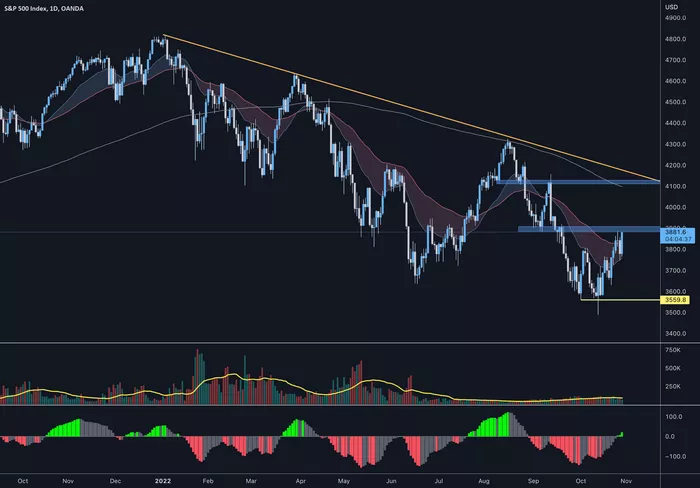Investing in the stocks market can be both exciting and daunting. As markets shift and change, investors constantly seek ways to protect their investments while maximizing returns. One of the most widely recommended strategies to reduce risk while staying active in the stocks trading world is diversification. But what exactly does diversification mean in the context of stock investments?
Diversification is the process of spreading investments across various financial instruments, industries, and other categories to reduce exposure to any single asset or risk. When done effectively, diversification can significantly minimize potential losses and help smooth out returns over time. This approach is especially crucial in the dynamic environment of stocks trading, where stocks price movements can be unpredictable.
This article will walk you through everything you need to know about diversification, including its importance, strategies, real-life applications, benefits, and even its limitations. Whether you’re a novice investor or a seasoned trader, understanding diversification will enhance your ability to make informed and resilient investment decisions.
What Is Diversification in Stock Investing?
Diversification in stock investing refers to building a portfolio that includes a wide range of individual stocks from different sectors, industries, or geographic regions. The idea is simple: by not putting all your financial eggs in one basket, you reduce the risk of your overall portfolio suffering from a downturn in one particular area.
Imagine owning stock in just one company. If that company fails or its stock plummets, your investment suffers. However, if your money is distributed among 20 different stocks across different sectors, a fall in one or two won’t devastate your total portfolio.
Types of Diversification
1. Sector Diversification
Sectors like healthcare, technology, finance, and energy each behave differently under various economic conditions. Sector diversification ensures your portfolio isn’t overly affected if one sector takes a hit.
2. Geographic Diversification
Investing in international stocks or global funds reduces exposure to risks tied to a single country’s economy or political situation.
3. Market Capitalization Diversification
Large-cap, mid-cap, and small-cap stocks each carry different risk-return profiles. A blend helps smooth returns and offers growth potential.
4. Asset Class Diversification
Though primarily focused on stocks, many investors diversify across asset classes (bonds, real estate, commodities) to enhance portfolio stability.
Why Is Diversification Important in the Stocks Market?
One of the key reasons investors diversify is to manage risk. Stock markets can be volatile. A single company or industry can face issues such as regulatory penalties, product recalls, or economic downturns. By spreading investments across various assets, the poor performance of one doesn’t significantly affect the entire portfolio.
The stocks market is influenced by many external factors such as interest rates, inflation, economic cycles, and global events. Diversification helps buffer portfolios against these unpredictable factors.
How Diversification Affects Risk and Return
Diversification does not guarantee profits, but it helps mitigate losses. A well-diversified portfolio usually has more stable returns over time compared to one that’s concentrated in a few holdings.
Mathematically, diversification lowers the standard deviation of your portfolio’s returns. This means your investments won’t be as subject to wild swings in value, giving you more predictable outcomes over time.
The Role of Correlation in Diversification
When building a diversified portfolio, choosing stocks or assets that don’t move in the same direction is critical. This is known as selecting low-correlation or negatively correlated investments.
For example, utility stocks and tech stocks may not be strongly correlated. If tech underperforms due to innovation risk, utilities might remain stable due to steady demand. This balance helps cushion your overall portfolio.
Common Mistakes in Diversification
1. Over-diversification
Spreading investments too thin across too many assets can dilute returns and make it hard to manage the portfolio effectively.
2. False Diversification
Buying many stocks in the same sector (e.g., several tech companies) may feel diversified but offers little protection if the whole sector declines.
3. Ignoring Asset Correlation
Not accounting for how assets move together can result in a portfolio that’s more correlated than intended.
Steps to Build a Diversified Stock Portfolio
1. Define Investment Goals
Determine your risk tolerance, time horizon, and financial objectives before selecting stocks.
2. Choose a Mix of Sectors and Industries
Include a balance of defensive and cyclical stocks from various industries to spread risk.
3. Incorporate International Stocks
Global diversification can help protect against domestic economic downturns.
4. Use ETFs and Mutual Funds
Exchange-traded funds (ETFs) and mutual funds provide instant diversification through professionally managed collections of securities.
5. Monitor and Rebalance Regularly
Regular portfolio reviews ensure your diversification remains aligned with your goals, especially after major market movements.
Benefits of Diversification in Stocks Trading
Risk Reduction: Minimizes the impact of poor-performing stocks.
Stability: Evens out volatility and helps maintain consistent returns.
Opportunities: Allows participation in the growth of multiple sectors.
Capital Preservation: Helps protect investments in bear markets.
Case Studies of Diversification Success
Many investment funds and legendary investors like Warren Buffett and Benjamin Graham have promoted diversified strategies. For example, index funds like the S&P 500 contain hundreds of stocks across various sectors, providing investors with broad market exposure. Historical data shows that these funds tend to perform better over long periods compared to single-stock portfolios.
Modern Portfolio Theory (MPT) and Diversification
Introduced by Harry Markowitz, Modern Portfolio Theory supports the concept that a diversified portfolio provides the maximum expected return for a given level of risk. MPT is foundational in financial planning and justifies the logic behind stock diversification strategies used by investment managers today.
Diversification and Stock Price Volatility
When stocks price swings heavily due to market news or economic reports, having multiple investments that react differently helps cushion losses. This is particularly true during times of economic uncertainty or recession.
For example, during a recession, consumer discretionary stocks may fall while healthcare and consumer staples may hold or even rise. A diversified investor can weather such storms more comfortably than one invested in a single sector.
Is Diversification Always the Best Strategy?
While diversification is powerful, it may not always lead to the highest returns. Concentrated portfolios can outperform during bull markets if stock picks are correct. However, they carry much higher risk. For most long-term investors, the peace of mind and reduced risk that comes with diversification often outweighs the potential for greater—but uncertain—rewards.
Diversification in Practice: Sample Portfolio
Here’s a sample diversified stock portfolio for a moderate-risk investor:
20% Large-Cap US Stocks
15% Mid-Cap US Stocks
10% Small-Cap US Stocks
20% International Developed Market Stocks
10% Emerging Market Stocks
10% Sector-Specific ETFs (e.g., technology, healthcare)
15% Bonds or Bond Funds
This mix spreads risk and increases exposure to different growth opportunities.
The Impact of Diversification on Long-Term Growth
Studies have shown that diversified portfolios tend to perform more consistently over long periods. While they may not always beat the market in short spurts, they are less likely to suffer catastrophic losses and are better positioned for compounding growth.
Compounding is key in wealth-building. By avoiding major losses and ensuring steady returns, diversified investors can see substantial gains over time.
Conclusion
In summary, diversification is one of the most powerful tools available to investors. It helps reduce risk, improves consistency in returns, and allows participation in a broad set of opportunities across the stocks market.
Whether you’re just beginning your journey in stocks trading or looking to optimize an existing portfolio, incorporating a well-thought-out diversification strategy can significantly improve your chances of long-term success. Pay attention to how your assets are correlated, regularly rebalance, and stay informed. Over time, this disciplined approach will serve you well regardless of market conditions.
Keep an eye on stocks price movements and adjust your holdings to remain diversified and aligned with your financial goals. In a world of uncertainties, diversification offers clarity, control, and confidence.
Related topics:


































